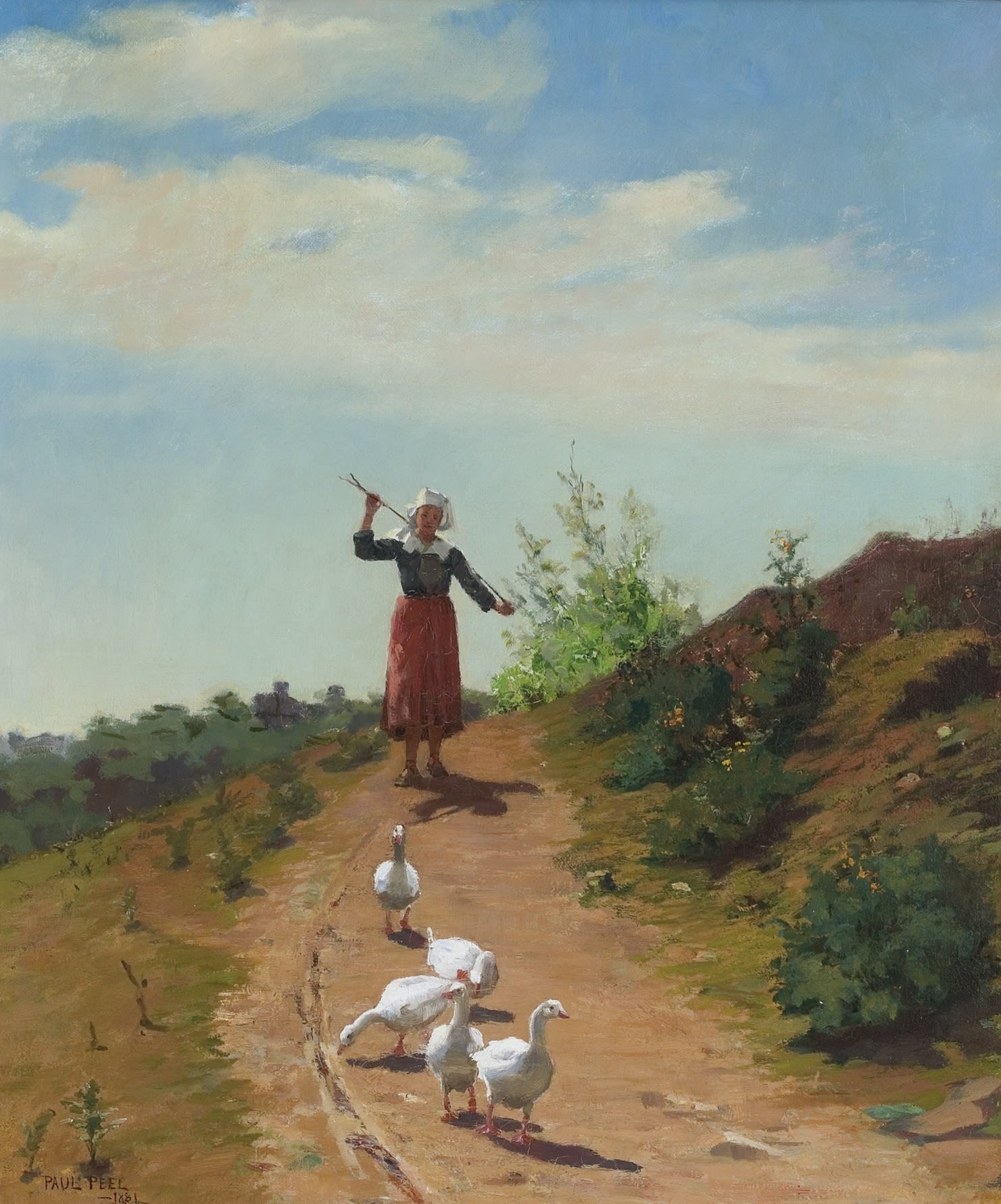Paul Peel (November 7, 1860- October 3, 1892), a prominent figure in Canadian art history, is celebrated as one of the country's most famous painters. Born in London, Ontario, Peel’s early life was enriched by the artistic atmosphere provided by his father, a skilled stone-carver and drawing instructor.

Paul Peel; Pont-Aven, France
Peel began his formal art training under his father’s guidance, furthering his studies with prominent artists such as William Lees Judson and Thomas Eakins at the Pennsylvania Academy of the Fine Arts from 1877 to 1880. His education continued in Europe, where he studied at the École nationale supérieure des Arts Décoratifs and the École des Beaux-Arts in Paris under the tutelage of masters like Jean-Léon Gérôme and Benjamin Constant. Peel also attended the Académie Julian, where he was influenced by the tonal method of rendering natural light outdoors.

Paul Peel; The Young Gleaner
In 1883, Peel exhibited his first painting at the prestigious Paris Salon, marking the beginning of his international recognition. His works displayed a conservative quality initially but gradually adopted impressionistic elements, showcasing his evolving style. Throughout his career, Peel won several accolades, including a bronze medal at the 1890 Paris Salon for his painting "After the Bath," which reflects his mastery in depicting the human form with grace and sensitivity.
Peel's artistic vision was broad, influenced by the diverse landscapes and cultures he encountered during his travels, both in Canada and Europe. Known for his masterful portrayal of nudes and sentimental depictions of children, Peel's work resonated with viewers through their innocence and charm. His painting "The Modest Model" and other works involving children effectively became his brand, striking immediate chords with the public.

Paul Peel; Bringing Home the Flock
Tragically, Paul Peel’s life was cut short when he died in his sleep from a lung infection on October 3, 1892, in Paris, France, at the age of 31. Despite his brief career, his works are considered rare and valuable treasures within the world of Canadian art. His childhood home is now an attraction at the Fanshawe Pioneer Village in London, Ontario.
Peel's international recognition and innovative approach to figure painting continue to captivate art enthusiasts and inspire contemporary artists, securing his place as a beloved and enduring figure in the annals of Canadian art history.

